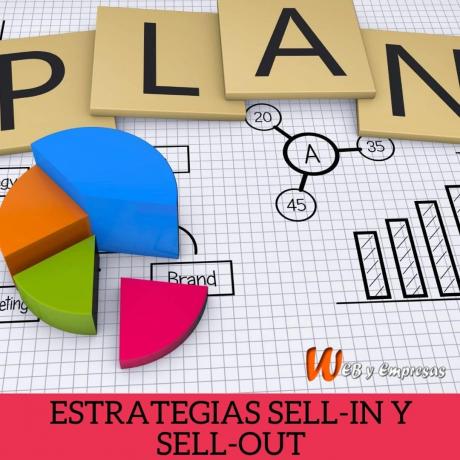When planning a strategy for managing sales in a company, the traditional sell-in and sell-out technique They are always present and their use has also been shown to help improve sales significantly.
The sell-in and sell-out strategies are the best known and used to achieve desirable sales volume for companies. For this reason, it is important to use a strategy that guarantees a sales volume that generates profitability, this being one of the most important objectives of any company.
Advertisements
Despite the fact that both strategies, sell-in and sell-out, are intended to guarantee a large volume of sale of their products, their target audience is totally different. For this reason, it is essential to have a clear understanding of both methodologies in order to be able to define or choose the correct strategy.
In search of that sales volume, mentioned previously, when you plan the sale of a product or service, your strategy seeks to influence the decisions of potential customers in order for them to buy from you and not from your competitor.
Advertisements
In this article you will find:
Considerations for using Sell-In and Sell-Out?

The sell-in and the sell-out are strategies that complement each other and must be used in order to obtain the best sale of a product. The intention of the person offering it for sale is, as previously mentioned and even going through several merchants or intermediaries, to sell to the end customer.
Advertisements
Of course, the proposal made using these strategies must take into account, for example, the buyer-client relationship with the product, the sales process, the distribution channels, among others. When planning the strategy, the changes that are taking place in the sales and management processes must also be considered.
They are linked and must work together. In the sell-in, all the information of the sales movements that occur within the company is recorded. On the contrary, in the sell-out, the information of the sale is quantified, but that which is handled by the final consumer of the product.
Advertisements
Then, the sell-in is used to incentivize wholesalers or distributors to place an order. large number of merchandise to promote new products while the sell-out is consumer-oriented final.
Differences between Sell-In and Sell-Out.
Advertisements
They are terms used with specific sales channels. In these strategies, the transactions seek to convince the customer to buy the product or service from through showing and reinforcing its characteristics and advantages, even if the type of target customers is different.
Sell-In:
- It occurs when the retailer closes an agreement to purchase the products or services.
- The focus is only on the specific objective of the product or service.
- It corresponds to the direct sale, for example, from a local merchant to a passerby.
- Seeks the increase in the number of products and their placement in the client's warehouses.
- The exact number of units of a product that the manufacturer sells to the retailer or merchant is known.
Sell-Out:
- It occurs when the customer agrees to purchase the product from the retailer.
- It caters to different points of sale and its focus is on the general market or industry.
- It corresponds to the sale to a specific customer or business partner who in turn is responsible for selling the same product to another customer, for example, to distributors.
- It seeks to increase the rotation of the product in the client's or distributor's warehouses, that is, to sell a larger quantity.
- In this, the exact number of units of a product that the retailer sells to the customer or buyer is known.
How do Sell-In and Sell-Out strategies work?
The sell-init is a basic process that not only refers to offering a product, but that offer must be adequate so that when it goes to the final consumer, the advantages of the product really come to them. What the sell-in projects must be proportional to what the company projects as sell-out.
The sell-in is the sale made to the retailer, that is, the sale to who will make the product or service available to the final consumer and for this to happen it is necessary the buyer understands all its characteristics very well: packaging, price and handling, in addition to the advantages that the product provides.
The sell-out, as already mentioned, is the sale made to the final consumer and for that sale to take place it is not enough to just have the products available. Above all, it is necessary to offer the product in the correct way. Therefore, it is the final consumer who must perceive the advantages of the product or service when he consumes them.
In short, it is difficult to establish a pattern to determine what type of strategy is best suited for a company, It depends to a greater extent on the type of business you have, the market niche and the product or service you want market.


